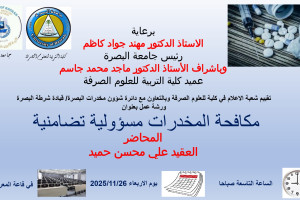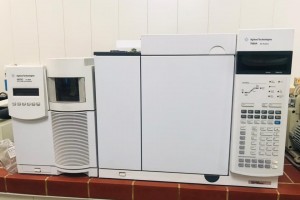
The College of Education for Pure Sciences, Department of Chemistry, University of Basra, discussed a master’s thesis on (Preparation of some heterocyclic compounds from 1,2,3,3-cillinadiazole and the study of its biological effectiveness against breast cancer)
The thesis, which was moderated by the researcher (Ahmed Khalil Yassin), included the preparation of eight compounds of semi-carbozone (1a-8a) from the reaction of semi-carbazide with eight different types of ketones. 8b) Through the interaction of semi-carbazone compounds in glacial acetic acid with selenium dioxide and by two methods, the method of using reverse distillation and the method of using microwave radiation, and the comparison between the two methods in terms of time and yield.
The effectiveness of the prepared compounds (2b, 3b, 4b, 5b, 6b, 7b, 8b) against the growth of cancer cells was studied, as it was studied on MCF-7 breast cells, and the IC50 value was calculated. The compounds 4b, 5b and 6b showed good biological activity compared to the rest of the compounds. other. A theoretical study was conducted through a computer simulation technique to show the possibility of molecular docking of compounds 4b, 5b and 6b and to show their binding as glycands to the active sites of different proteins as receptors responsible for breast cancer and cell inhibition. The binding energy, or the so-called affinity, was calculated between the ligand and the receptor protein, and the number, type and length of the bonding bonds were determined and affected by Vander Waals forces between the various amino acids for each studied protein.
The aim of the thesis was to study Molecular dynamics to analyze the results of the physical movements of atoms and molecules, which allows a more accurate estimate of the related thermodynamics and kinetics to identify the bonding between the studied compounds and proteins.








